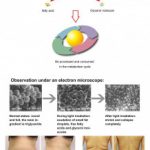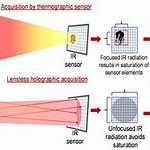Light therapy is a popular treatment for various skin conditions, including acne, psoriasis, and eczema. However, there are concerns regarding the potential link between light therapy and skin cancer. In this discussion, we will explore and analyze the evidence available to determine whether light therapy can cause skin cancer.
Contents
Understanding Light Therapy
Light therapy is a non-invasive treatment that uses specific wavelengths of light to improve mood, sleep, and skin health. It has been used for many years to treat various skin conditions such as acne, psoriasis, and eczema. It works by penetrating the skin and stimulating the production of collagen, which helps to reduce fine lines and wrinkles. Light therapy is also used to treat Seasonal Affective Disorder (SAD), which is a type of depression that occurs during the winter months due to a lack of sunlight.
The Different Types of Light Therapy
There are several types of light therapy, including red light therapy, blue light therapy, and green light therapy. Each type of light therapy targets different skin conditions and has different wavelengths. Red light therapy, for example, has a wavelength of 630-700 nm and is used to stimulate collagen production, reduce inflammation, and improve skin texture. Blue light therapy has a wavelength of 405-420 nm and is used to kill acne-causing bacteria. Green light therapy has a wavelength of 525-550 nm and is used to reduce redness and hyperpigmentation.
How Light Therapy Works
Light therapy works by penetrating the skin and stimulating the production of ATP, which is the energy source for cells. This, in turn, stimulates the production of collagen, which helps to reduce fine lines and wrinkles. It also helps to reduce inflammation and improve skin texture. Light therapy can be done at home using a light therapy device, or at a dermatologist’s office.
The Connection Between Light Therapy and Skin Cancer
There has been some concern about the connection between light therapy and skin cancer. Ultraviolet (UV) radiation from the sun is known to cause skin cancer, and some types of light therapy, such as full-spectrum light therapy, emit UV radiation. However, the amount of UV radiation emitted by light therapy devices is much lower than the amount of UV radiation emitted by the sun.
The Risk of Skin Cancer from Light Therapy
The risk of developing skin cancer from light therapy is low, but it is not zero. People who have a history of skin cancer, or who are at high risk of developing skin cancer, should talk to their dermatologist before using light therapy. It is also important to use a light therapy device that emits a low level of UV radiation, and to use it properly.
How to Minimize the Risk of Skin Cancer from Light Therapy
To minimize the risk of developing skin cancer from light therapy, it is important to use a light therapy device that emits a low level of UV radiation. It is also important to use the device properly, and to avoid overexposure to the light. People who have a history of skin cancer, or who are at high risk of developing skin cancer, should talk to their dermatologist before using light therapy.
The Benefits of Light Therapy
Light therapy has many benefits, including improving mood, sleep, and skin health. It has been shown to be effective in treating acne, psoriasis, and eczema. It can also help to reduce inflammation and improve skin texture. Additionally, light therapy is used to treat Seasonal Affective Disorder (SAD), which is a type of depression that occurs during the winter months due to a lack of sunlight.
The Different Types of Light Therapy Devices
There are several types of light therapy devices, including handheld devices, light therapy lamps, and light therapy masks. Handheld devices are small and portable, and can be used to target specific areas of the body. Light therapy lamps are larger and emit light over a larger area, making them a good choice for people who want to treat their entire face or body. Light therapy masks are worn over the face and emit light in different wavelengths.
How to Use Light Therapy Devices
To use a light therapy device, you should first cleanse your skin and remove any makeup. You should then position the device about 6 inches away from your face and turn it on. You should keep your eyes closed during the treatment, as the light can be bright. Most devices have a timer that will turn off the device after a certain amount of time. You should use the device according to the manufacturer’s instructions, and avoid overexposure to the light.
The Importance of UV Protection
While light therapy devices emit a low level of UV radiation, it is still important to protect your skin from the sun’s harmful rays. You should wear sunscreen with an SPF of at least 30, and reapply it every two hours. You should also wear a hat and protective clothing, and avoid prolonged exposure to the sun.
The Bottom Line
Light therapy is a safe and effective treatment for various skin conditions and can improve mood and sleep. While there is a low risk of developing skin cancer from light therapy, it is important to use a device that emits a low level of UV radiation and to use it properly. People who have a history of skin cancer or who are at high risk of developing skin cancer should talk to their dermatologist before using light therapy. Additionally, it is important to protect your skin from the sun’s harmful rays by wearing sunscreen, a hat, and protective clothing.
FAQs – Can Light Therapy Cause Skin Cancer?
What is light therapy?
Light therapy, also known as phototherapy, is a medical treatment that uses light to treat various health conditions. It involves exposing the skin to different types of light, such as ultraviolet (UV) light, visible light, or infrared radiation, in order to stimulate healing, reduce inflammation, or kill bacteria.
Can light therapy cause skin cancer?
While light therapy is generally considered safe and effective, there is some concern that prolonged exposure to UV light can increase the risk of skin cancer. UV light is a known carcinogen, which means it can damage DNA and lead to cancerous growths. However, the risk of developing skin cancer from light therapy is generally considered low, especially if the treatment is administered by a trained professional and used in moderation.
What types of light therapy are most likely to cause skin cancer?
UV light is the type of light that is most likely to cause skin cancer, as it can penetrate deep into the skin and damage the DNA of skin cells. UV light is often used in light therapy to treat skin conditions such as psoriasis and eczema, but it can also increase the risk of developing skin cancer if used excessively.
How can I reduce my risk of developing skin cancer from light therapy?
If you are undergoing light therapy, there are several things you can do to reduce your risk of developing skin cancer. First, make sure you are receiving treatment from a licensed professional who is experienced in administering light therapy. Secondly, avoid exposing your skin to sunlight or other sources of UV light during and immediately after treatment. Lastly, be sure to wear sunscreen and protective clothing, and keep an eye on any changes in your skin, such as new moles or spots. If you notice any changes, be sure to speak with your healthcare provider.
Is there a safe way to undergo light therapy?
Yes, there is a safe and effective way to undergo light therapy. It is important to work with a qualified healthcare provider who can help you determine if light therapy is a good option for your specific condition, and who can carefully monitor your treatment to ensure that you are not experiencing any adverse effects. Most professional light therapy treatments use specific wavelengths of light that are carefully calibrated to target specific conditions without causing harm to the skin or increasing the risk of skin cancer.







